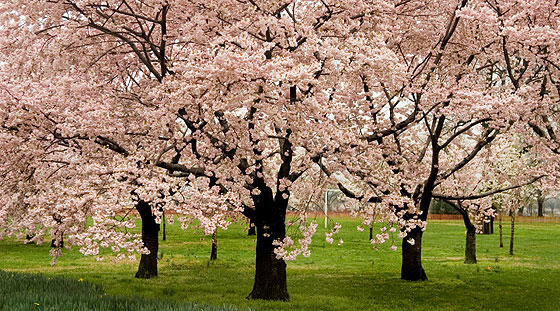
- Cherry blossoms in Potomac River Park near Washington DC in 2004.
- istockphoto.com

Man-Made Soils
These famous cherry trees bloom despite poor soil conditions.
Man-made soils made life difficult for many of the national capital’s cherry trees. In the early 1900s, sediments dredged from the Potomac River were used to build the soils around the Tidal Basin. Water does not drain well from these highly compacted soils. And, cherry trees do not tolerate “wet feet”—having their roots saturated with water.
Early tries to improve soil aeration made the situation worse. Adding a layer of “fluffy soil” around the root ball of newly planted trees just created a drowning pool for them. Soil scientists at the National Park Service solved these problems by digging larger holes, backfilling with denser soil, mounding the soil, and improving drainage.
